So you’re thinking about purchasing a special piece of jewellery. You’ve started to take note of the jewellery the recipient already wears and through that research you’ve come to the conclusion that they like silver coloured metals best. You’ve gazed at several jewellers’ dazzling window displays, and you’re now totally baffled by the range of sparkly white metal pieces that all look the same but for some reason have vastly varying price tags. You’ve had conversations with your friends about white gold and ‘dipping’ – what does that even mean?! Everyone seems to think platinum is the best, but you have no idea why, and what about palladium? You’ve never even heard of that!
It seems that white metals are the centre of a whole heap of misunderstanding and confusion which I feel is down to mixed messages coming from high street jewellers and misinformed friends and family trying to help you out. In this series of posts, I hope to clear up the confusion and give you the facts about these precious metals.
So let’s start by comparing how the white precious metals look next to each other:

Silver has the lightest and brightest appearance. 9ct white gold has a creamy, yellow-tinted hue in contrast to the darker, more gunmetal toned 18ct white gold. Of course, you don’t regularly see white gold in its natural state on the high street – I will go into more detail about this in the second article in this series all about white gold. Platinum and Palladium lie somewhere in between silver and 18ct white gold in colour – darker than silver but brighter and whiter than 18ct white gold.
SILVER – The Basics
First off, let’s look at silver – an often overlooked metal because of its prevalence and the fact that it oxides quite readily. It is the most reactive of the precious metals in terms of ‘tarnishing’, and this is because of the copper content in its makeup. You will usually see silver items and jewellery advertised as Sterling silver, which is an alloy of silver made up of 92.5% pure silver (hence the 925 mark) with the remaining 7.5% usually made up of copper. The reason for this addition is to increase the durability of the metal as Fine silver (which is 99.9% silver) is considered too soft for general purpose. You may also see Britannia silver, which is 95% pure silver with 5% other alloys.
New kid on the block is Argentium silver. Argentium silver has a higher purity than Sterling silver, and in terms of colour is a brighter white colour than even Platinum. It is a modern development which swaps some of the copper content for a metal called germaniumIt is highly tarnish resistant. Argentium silver is hypoallergenic and responsibly sourced, so a good choice for bespoke jewellery!
Tarnished Reputation
Silver tarnishes when unworn or is in damp conditions. This black-brown stain on the metal is easily polished off using special cloths impregnated with polish available from jewellers or online. Stubborn tarnish, especially on matt or satinised silver, can be removed using a chemical silver dip, but you must not use this technique if the piece is set with porous stones such as emeralds, opals or pearls. If you wear your silver jewellery regularly, you will not have this issue as the oils in your skin and the constant burnishing the metal will receive from everything it comes into contact will prevent this from occurring. The best way to store silver jewellery when it is not being worn is to wrap it up in a cloth and place it inside an airtight bag to stop it from tarnishing.
Pros and Cons of Silver Jewellery
Silver is a beautiful precious metal; it has a gorgeous bright bluish white hue that works well with a wide range of skin tones and a stunning natural lustre which has made it a popular choice since the 13th century.
However it is the softest metal out of the selection of precious metals available to you so you must take this into account when purchasing a piece made of silver. Earrings and necklaces rarely come into contact with anything other than the wearer but rings and bracelets need a little more consideration. I would not recommend setting a valuable gemstone into a silver ring because it dents, bends and scratches very easily. If you’re looking to have a silver ring made, you could always consider having the setting for any stones made out of another more hard wearing metal.
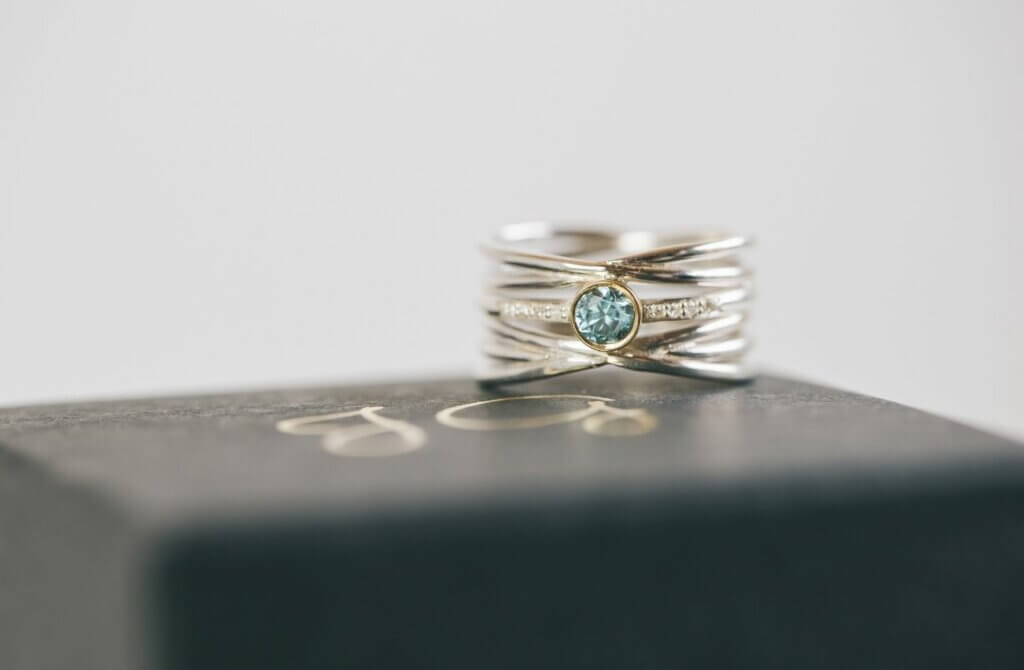
We melted down the old ring shank to create the bezel setting for the aquamarine, whereas the rest of the ring is made in silver.
Before we go any further, let’s discuss the durability of precious metals
No precious metal is what you could consider ‘strong’. Even stainless steel (which, of course, is not a precious metal) is still prone to getting scratched – just take a look at your door handles and sinks. In order for jewellery to be crafted by hand, it needs to be made from malleable materials. The tools used to manipulate metal to turn it into pieces of jewellery are usually steel as it is considerably harder than silver, gold or the platinum family metals. Just take a look at the Moh’s Scale of Mineral Hardness, which is also used when discussing gemstones too (I’ve added a few in to give you some comparison):
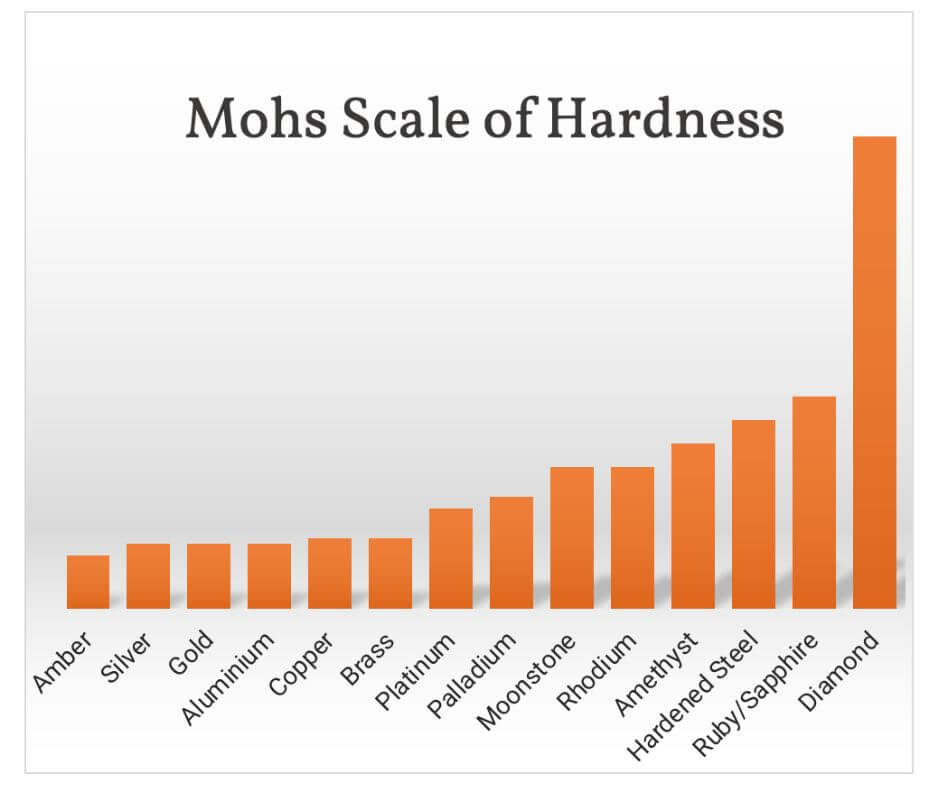
Any precious metal will accumulate dents and scratches as it is worn – rings in particular. Each time your hand comes into contact with a door or drawer handle, cutlery, keys… anything made of a harder substance, it will collect marks. You’ll notice the first one as it will stand out like a sore thumb but as the marks become more consistent, the resulting patina will not look ‘scratched’, more ‘lived in’.
The funny thing is that jewellery with a satinised finish will actually show marks more clearly. Both polished and matt pieces will eventually burnish to a dull shine over time. The key to longevity in jewellery, particularly rings, is to make sure there is sufficient depth to the piece for it to be able to survive a lifetime of knocks and scrapes. No matter how careful you are, it is impossible to keep a ring in pristine condition unless you keep it in a safe and never wear it and where is the fun in that?
I have a silver ring I have worn every day for the last five years – it has a lovely tactile texture which disguises all the dents and scratches it receives through wear and tear. This ring has a tiny diamond set in a gold rub over setting which gives it a little more protection than a silver setting would. It’s a chunky piece, at least 2mm deep and it is starting to get slightly thinner at the back of the ring but not to a level where it has become a problem. The best thing you can do to prolong the life of your jewellery is to take it off when you are doing something that puts it at risk.
Silver is an important metal
It has been used as currency and a regal choice for ornaments and tableware for centuries. These days, it is more commonly used for ‘everyday’ jewellery rather than fine jewellery and is the metal of choice when goldsmiths are training as it is not too expensive to replace when mistakes are made. That being said, it is an enjoyable metal to work with and is a lovely metal to wear.
No precious metal is ‘better’ than another – the right choice for you depends on your personal priorities which will be different to the next person. See the next instalment in this series of articles to educate yourself about white precious metals: White metals: Part two – White Gold

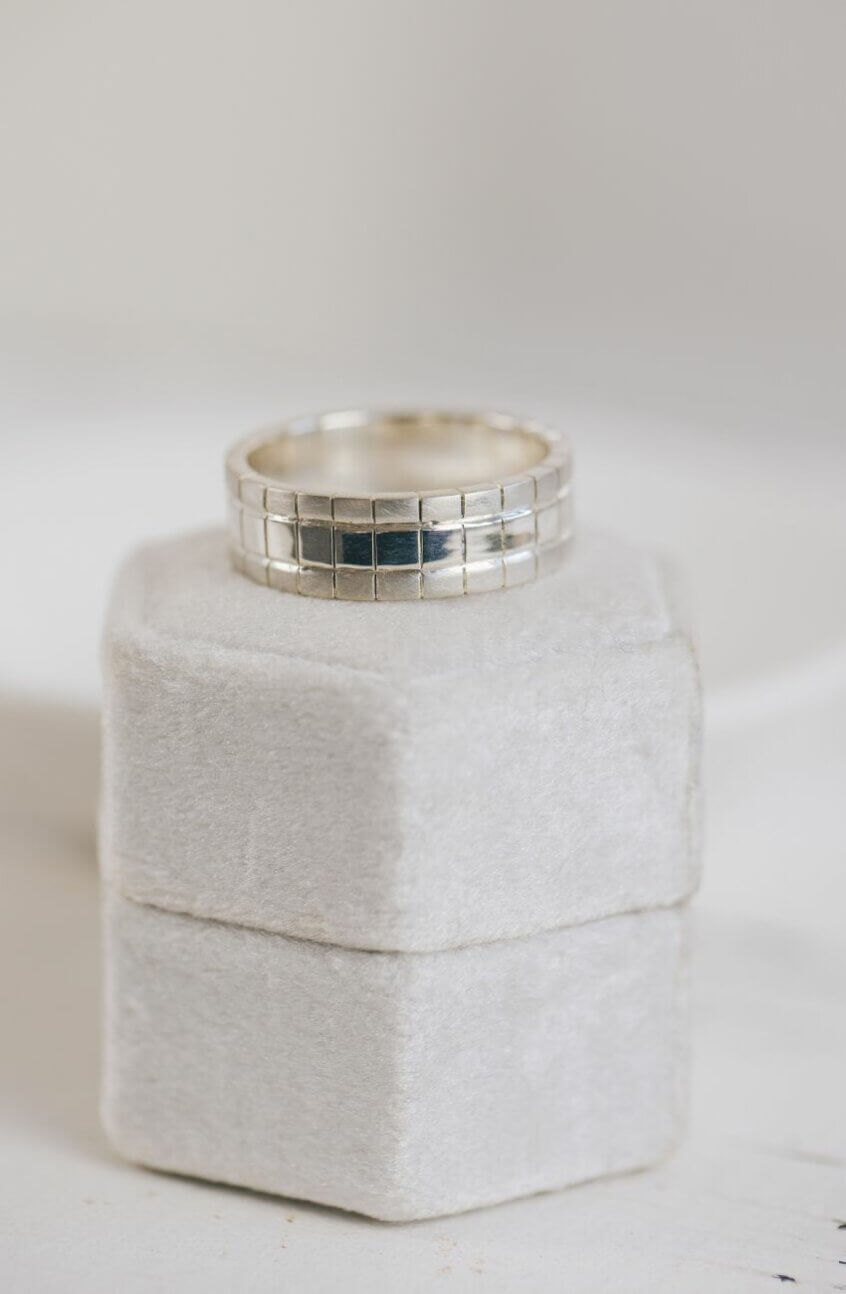
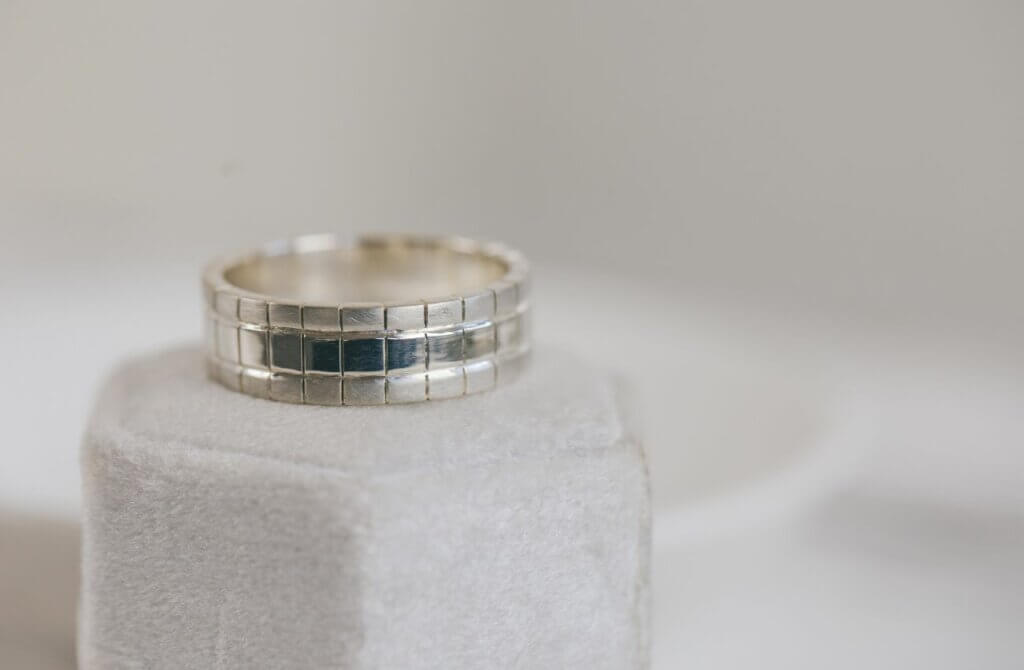
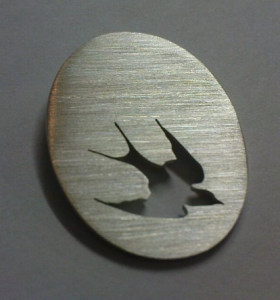
4 Comments on “White Metals: Part One – Silver”
I never knew how the oxidation process works, thank for the informative tips. I clean my silver jewelry with baking soda nad a soft tooth brush. It works, but I never understood WHY is the oxide formed on my accessories. Thanks for the explanations! 🙂
No problem! So glad you found it informative x
Can the copper in the sterling silver cause your skin to turn green? And I’m in love with the bright silver that almost looks white – however I didnt see that in any of the pictures in this article. Do you have any idea which type of silver that may be?
Hi Cass,
There is not enough copper content to turn your finger green. You might experience this to begin with if a ring is 9ct rose gold as there is lots of copper in it, but not with silver.
I know exactly the kind of silver you mean – it is beautiful, usually matt looking. Silver looks like that after it has been in the ‘pickle’ that cleans oxidisation off the piece after heating/soldering, and is usually brushed/sanded/polished off to reveal the shiny silver underneath, but some jewellers leave it on as it is pretty. It is only temporary as it will wear off with general wear and tear to the bright silver colour. I hope this helps!